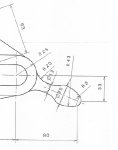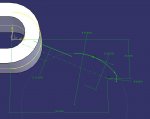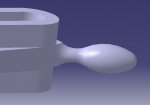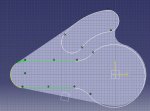Hello, my friends
I'm having a lot of doubts about how to create the solid shown in the picture.
I'm not sure about how to sketch it with all those radius. How can I find the center of all of them? I guess that's my main doubt for the moment. Any sugestions?
Thank you
I'm having a lot of doubts about how to create the solid shown in the picture.
I'm not sure about how to sketch it with all those radius. How can I find the center of all of them? I guess that's my main doubt for the moment. Any sugestions?
Thank you










